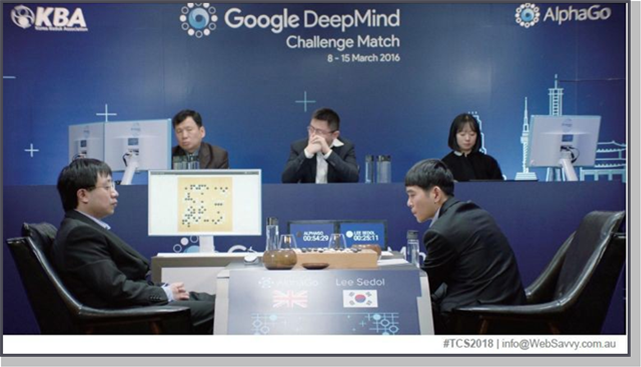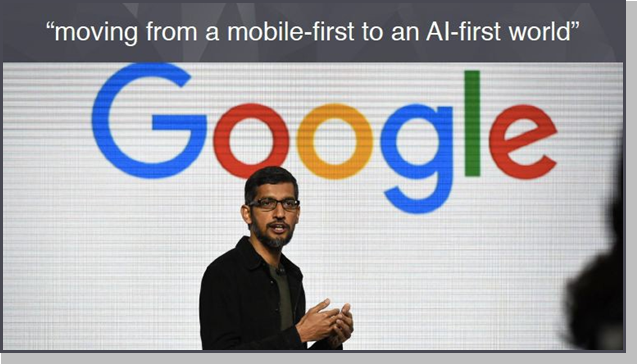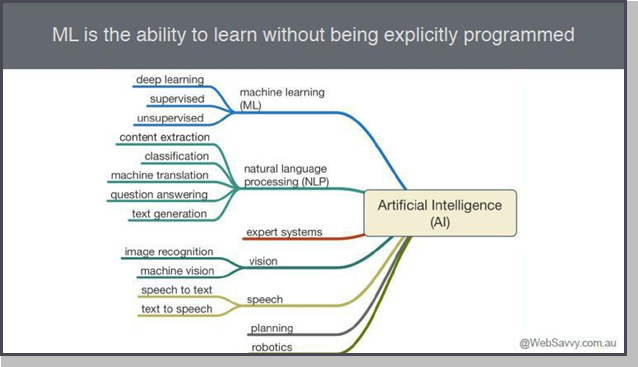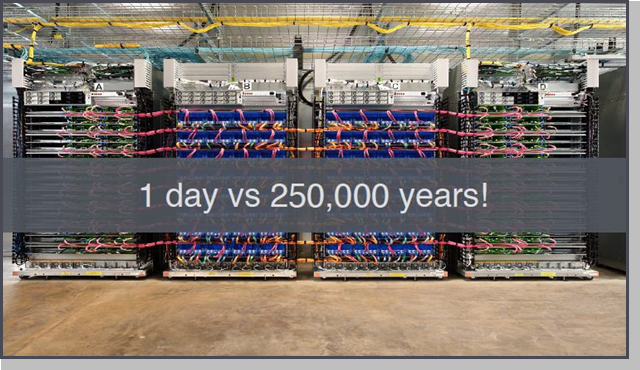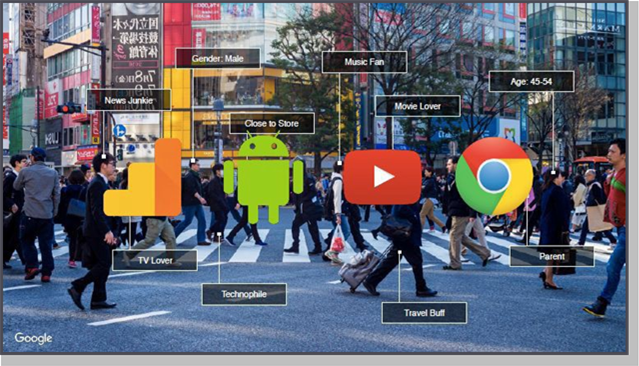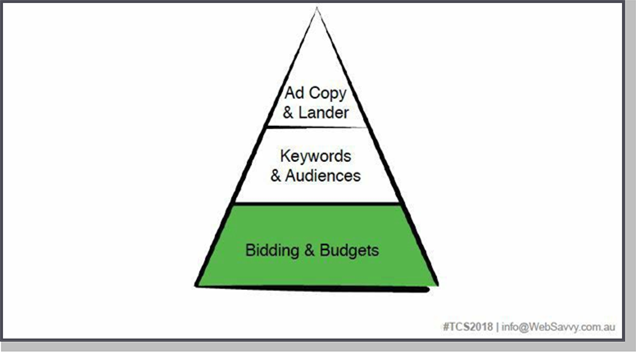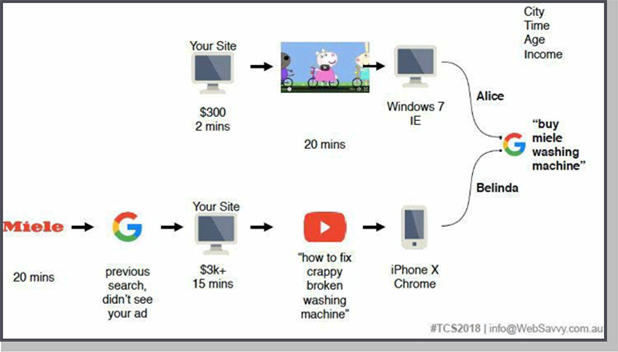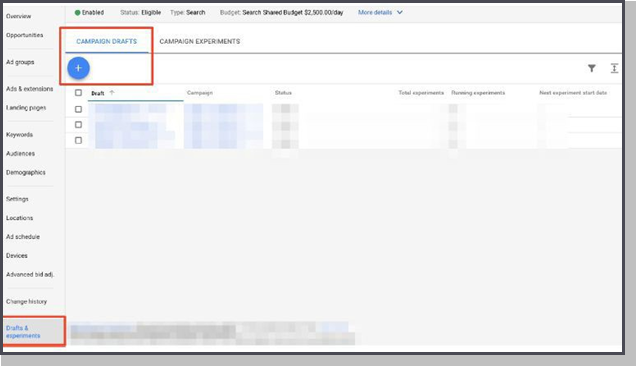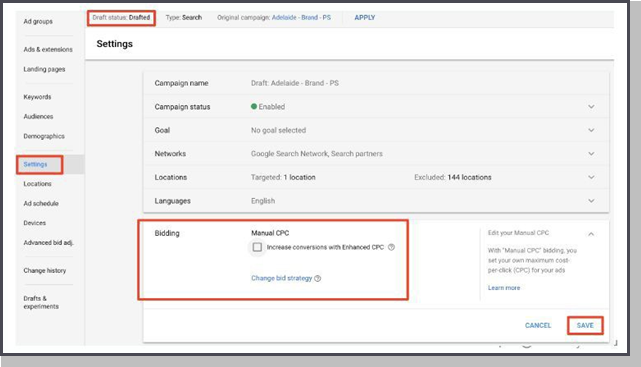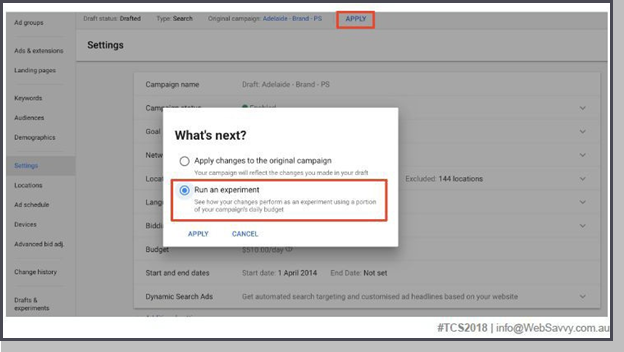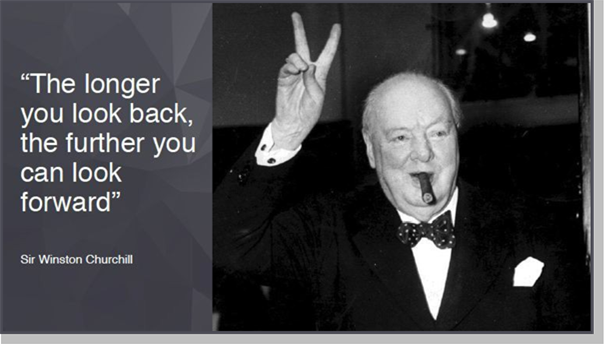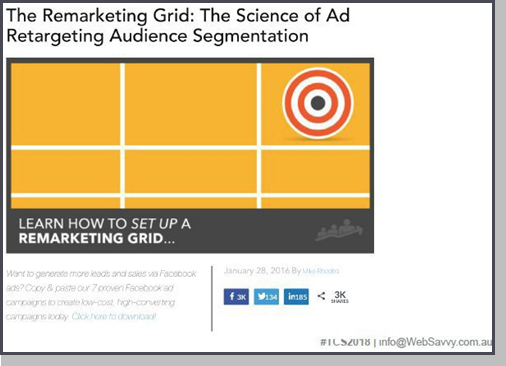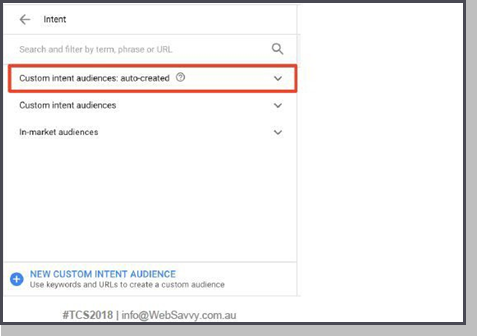Mike Rhodes
Mike is approaching veteran status in the AdWords world. He’s in his 13th year of building and running campaigns for businesses and brands all over the globe. He’s the co-author of the world’s best-selling book on AdWords, The Ultimate Guide to Google AdWords, now in its 5th edition.
In 2014, Google bought Deep Mind, now an integral part of Google’s IO, for 460 million dollars. Even though that business they bought wasn’t bringing in any revenue or clients, Google had the foresight to buy them because they had assembled over one-hundred of the best AI minds on the planet. Google knew that AI was the future and using it on their platform would give them a major edge against their competitors.
In 2014, when Google bought Deep Mind, they were working on a way to create a computer that could play and win the hardest game on the planet, the Chinese strategy game of Go. Even the best AI minds in the world thought that creating a machine that could learn and win this game was near impossible. The reason Go is the most difficult game in the world,
as opposed to chess, is because during chess at any point in the game the computer can look at what the next move is. The computer can then
figure out all of the next moves from the beginning to the end of the game, including all of the possible moves to find which one is the best. But in Go, a computer isn’t able to use that strategy of foreseeing moves because there are more possible moves in Go than there are atoms in the universe.
This is why so many AI experts in the world thought that creating a machine that could beat the best in the world at Go was impossible. To win at Go you need intuition, not just brain powers. And it was widely believed then that computers weren’t intuitive. Fast forward two years and they did it.
Deep Minds built an AI computer that can now beat the best in world at Go 5-1.
Just last year, Deep Mind built another computer called AlphaGo Zero. The difference between this computer and the first one they built, was that they didn’t teach AlphaGo Zero how to play the game. All they did was give it the basic concepts (black and white stones, a 19×19 board) and told it to go figure it out. And it did. In three hours, AlphaGo Zero was as good as an amateur human at Go. In 20 hours, it was as good as a professional human. And in three days, it was as good as the machine they built in 2016 was. In 21 days, it was as good as the machine that beat the best in the world, and by the time 40 days had passed, AlphaGo Zero could beat the old machine 100-0 without ever being taught what to do.
All of this is to say that Google owns the brain power of the best AI minds in the world. The people who know how to build a supercomputer that can beat the best person in the world at the hardest game in the world by
teaching itself. These same people, this same technology, is what is currently at the works in Google’s AdWords and audience targeting.
So what can all of this fancy AI technology do for you, for your business, and more important for your clients’ businesses? How do you leverage it?
Google and AI
Last years, the CEO of Google said “We are moving from a mobile first world to an AI first world.”
He then went on to say that Google is an AI first company and that arguably always have been. Today, AI is in virtually all of their products. We all use it every single day in everything from our smartphones, to Google Homes, and the Chrome browser. There’s no escaping it even if we wanted to.
What is AI?
Down to its core, AI is just an intelligent machine. There are many different technical definitions of AI that not even the smartest of AI experts can decide for themselves what the right definition is. In other words, AI is complicated. For the purpose of digital marketers and this article, the part of AI we need to focus on is the part called machine learning (ML). Machine learning is the ability for a computer to learn without being explicitly programmed. There’s a part of machine learning called deep learning which is the part that influences how we advertise on the internet.
So, why is all of this focus on AI happening now?
The Explosion of Data
In the world today there is a significant explosion of data that has happened, in no small way, because of the little computers we all carry around in our pockets. There is tons and tons of data being created and being collected every second of every day. If there’s one that AI loves is data.
Computing power has also made jumps and leaps in the past few years. The picture above is one of Google’s TPU units. One of these units can do a calculation in one day not that in the 90s would have taken a quarter of a million years. It’s this combination of really fast computer with the sheer amount of data that’s available today that makes algorithms get better and
better. Better algorithms are able to do more stuff, use more data, and do it faster while at the same time improving themselves and constantly getting better.
Data
It’s been said that Google has more data than the God of your choice. It’s true that they have a lot of data, more than anyone can comprehend.
Google also has a habit of putting out announcements letting you know that they won’t do this or that for privacy reasons. You’re seeing less of that in recent years because two companies, Facebook and Amazon, are snipping at Google’s heels asking for access to all this data. Google feels more of a need to start to monetize all of this data, and to use the AI to do it. This is because, of course, Google wants to retain their position as the number one search engine in the world.
When it comes to Adwords, Google has near perfect data. They have access to every single AdWords account that’s ever existed for the last 16 years.
This includes every keyword, bid, conversion rate, and everything else that goes into an AdWords account. Google’s AI machine is looking at all of this data constantly, keeps looking at it, and keeps getting better by the second.
In addition to having near perfect data about AdWords, Google also has near perfect data about us. They did this by buying a company called Urchin, turning it into Google Analytics, and giving away that tool for free. That tool is now on virtually every website in the world. They also bought Android two years before the first iPhone was announced. They bought YouTube for 1.6 billion dollars, which everyone thought was an insane move. But last year alone, YouTube made $2.8 billion for them. All of this isn’t even including Chrome, the most used browser in the world. All of these channels are bringing them in more data every minute in vast quantities that all get fed back to their AI.
Complexity
Google has access to all of this data, but their problem is that this entire system is extremely complicated. They know that this is a problem, and they’re trying to solve it. By creating something called Dynamic Sur Chats.
This works by looking inside your AdWords account at all of the keywords you have, and then by looking at your website. When someone comes along and does a search, and you’re not bidding on those keywords but they think that a specific person should see an ad because what they’re searching for matches what’s on your website, they decide to show that person an ad. The problem with this system, again is complexity. They cannot decide how much you should pay for that ad, so they end up writing most of the ad.
When this system works though, it works very well. Although there is a huge room for error.
For example, you have a client that does some case studies on his page and has also done some work with the local government. So Google looks into his site and remembers all of this data they pulled from it, including his case studies on local government. When you go to do an audit and take a deeper look into this AdWords account, you find out that he’s paying a lot of money to show up for all of these different government search terms because the AI thought this was relevant to his website. When in reality, the machine could not have been further off.
This client’s website in in video production and has nothing to do with the local government except for the few case studies he did. This is where the complexity factor can lead to a huge disaster for you and your client.
Simplify, Remove Control
Google is on the path to simplifying their entire ecosystem as much as is humanly possible. Their new AdWords interface that they’ve recently rolled out is incredibly simple to use and to understand. Their goal with simplifying their interface is to remove control away from the user. This could be a great thing if you’re a small business only spending $300 a month and are not exactly sure how to use AdWords to its full potential. But this removal of control can be a terrible thing if you’re running an agency and need to have control over how you’re handling your clients’ accounts.
If anything, this trend of simplifying and removing control is going to continue. AdWords is already for the most part controlled by the
automated AI platform, and in the next couple of years this is going to become true for every part of the AdWords platform.
What is Advertising?
Why are we applying all of this AI into our advertising?
It’s all about showing the right message to the right person at the right time, and doing it profitably.
The right message in your ads and on your website and the right person make up the targeting part of advertising. Doing it profitably is essentially the bidding part of advertising.
Bidding
All of the same AI work that was behind the company Deep Mind and their supercomputer is the same AI work that is behind Google’s bidding. It’s easy to understand how as a human marketer it’s going to be extremely difficult to compute with the world’s smartest computers that are constantly teaching themselves how to be better and faster. Luckily, we’re at this point where the AI still hasn’t reached its full potential. It’s a machine that needs to take time to collect data, analyze it and learn from it in order to make itself better.
Right now, the AI bidding is better than any human digital marketer about 20% of the time.
wwwwww.g.geetwtwssooddoo.c.coomm
Right now, there are always going to be times when the computer is not as
good as a human, but there will come a day soon when there will be absolutely no competition. So, instead of humans trying to constantly stay one step ahead of this extremely powerful and intelligent AI, we should learn how to embrace it and use it to our advantage.
Don’t spend time banging your head against the wall trying to do all of this stuff manually because it just takes too much time. Instead, let the AI help you and save you time so that you can spend your energy on having more strategic conversations with your clients, being more creative, having better relationships, than figuring out how to automate a whole bunch of stuff that you shouldn’t be doing anymore.
Alice versus Belinda
Let’s take the example of two people, Alice and Belinda. They are both searching for exactly the same keyword, and your job is to figure out how much we should be paying for Alice or Belinda to see your ad. For this example, we’re going to say that both Alice and Belinda live in the same city at the same time, and are the same age with roughly the same income. The only difference between Alice and Belinda is that Alice is on a desktop computer while Belinda in on a mobile.
wwwwww.g.geetwtwssooddoo.c.coomm
At this point, you’re probably bidding a little more for the desktop because
you know, from your data, that desktops still convert twice as well for your client’s business. If you’re a pro at Google Analytics, you would also know the type of products Alice and Belinda are searching for, how long they’ve spend on your site, and you’re probably adjusting your bids based on that. If you’re doing all of that, you can consider yourself a Google Analytics expert and in the top 10% of agencies.
What you don’t know, and what Google does, is that Alice and Belinda were both on YouTube for the last 20 minutes. While this piece of data alone doesn’t change things much, once we put this data together with all of the other pieces of data that Google has access to but we don’t, things start to change drastically. Google knows what both Alice and Belinda have been doing searches for since the beginning of time. Google also knows that Belinda was on the Nike website for 20 minutes yesterday. Google knows the value of products she was looking at there, how long she spent on a particular page, and how whether or not this behavior is normal for her.
So while you may have choose Alice at the beginning of this example for the fact that she was on a desktop and Belinda was on a mobile, Google has an entirely different thought process. Google knows that while both of the women were on YouTube for 20 minutes yesterday, Belinda was searching for videos on how to fix a broken washing machine while Alice was watching Peppa Pig videos. While Alice is on a desktop, Google knows that her desktop is an ancient machine still using Internet Explorer while Belinda is on a brand new smartphone browsing on chrome. Now you may be thinking that you’re original choice to spend more money advertising to Alice may have been a mistake, because clearly Belinda is the correct target audience.
There is no way that you, as a human marketer, could have known any of this additional information about Belinda and Alice. While Google has all of this information, they can’t give it us. So instead of giving us this data to figure out what to do with it, they are looking at it all and deciding how much
you should bid on an Alice or on a Belinda. Then they are watching what happens next and updating the model every second. Even if they wanted to give us all of this data, they couldn’t. It’s such a vast amount of data that the UI would be insane and the API would be broken most of the time. And then once we all had this data all of the digital marketers in the world would
have to build their own AI machines which is nearly impossible. So instead of
going through all of this hassle, Google has just said, “We’ll just build the AI,
and you’re going to have to trust us.”
When it comes to AI and robots trying to take over your business, it makes sense that you should test before your trust.
Testing Manual vs Auto Bidding
Drafts & Experiments
Inside your AdWords account is this thing called drafts and experiments. Instead of going straight to creating a campaign, the first thing you’re going to do is build a draft campaign so you can test and experiment without compromising the actual campaign.
Pro-Tip—put the word draft at the beginning of your draft campaign. Don’t use the same name because it gets confusing later on.
After you create a draft campaign you can go in and make changes. For example you can change from manual CPC to target CPA. You can tell Google that you need leads at $25 or whatever is a sensible number for you. Then you hit save and apply this draft.
So, a draft is a campaign that you’ve been making changes to that isn’t live yet. It’s a really great tool if you’re collaborating with someone else, but don’t want to apply those changes to the original campaign yet. You want to run this draft campaign as an experiment, so you go in and choose that option and hit apply again.
You’re going to end up with three different campaigns, the original, the draft, and the experiment. At this point, the AI is like a toddler. It needs to be watched. It will do amazing things every now and then but it still needs to be supervised at this point in its life. The growth of the AI is on a curve and very soon it will be a teenager and when that happens it will bring another set of problems to work with.
Other Uses for Drafts & Experiments
Drafts and experiments are really great if you want to test URLs among other things. For if you have a new client and your campaign is succeeding, but you want to make a change with a few keywords and are nervous. Drafts and experiments lets you do that without making any permanent changes to the original campaign.
Targeting
All of this data that Google has on us means that we won’t be using keywords in the near future. Instead, the audience targeting is what’s going to take over the AdWords platform and is an exciting prospect. But for now, keywords are still a major part of AdWords and they’re not dead yet. To understand what’s coming, first we need to go backwards.
Universal App Campaign
In 2015, Google launched their universal app campaigns. At the time, this was an optional way if you were showing your app ads to choose whether or not you wanted the universal aspect or not. Universal just means that Google is in charge and will take care of all the details for you.
Today, the universal is the only way you can run app campaigns inside of AdWords. When it works, it works brilliantly. When it doesn’t work, there’s not much you can do because as of now it’s the only choice Google is giving you.
Smart Display Campaigns
Last year, they rolled out STCs or smart display campaigns and smart display ads. Smart display campaigns generally work amazingly on very high spend accounts. They also can work terribly, with the good ones turning bad at the drop of a hat. At this point, the STCs are random and unpredictable.
While on the other hand, the smart display ads are great. You provide five headlines, five descriptions, up to fifteen images, and the machine learning will figure out the combinations of all of those things that work best. The only bad thing is that right now, they’re only available inside of smart display campaigns. Eventually Google plans to roll it out to the rest of Google Display at some point.
Predicting the Future of Google
Google is predicted to stay on this trend of universal campaigns, simplifying their platforms and removing control. All of this technology is making its way to the shopping and ecommerce side of marketing, and possibly search in the near future. At some point, Google may even take total control of the entire process, where all marketers and businesses will be able to do is give them their credit card and put their faith in the AI.
RLSA
RLSA stands for remarketing lists for search ads. It applies to shopping and the ecommerce side of ads. For example, you’re going to want to add your remarketing lists over the top of your search and your shopping campaigns. By doing this, you’re essentially telling Google, “Someone’s searching, but if
you recognize this person, if they’re on one of my remarketing lists, change the bid. Probably bid more, because this person’s searching and they’ve just been to my website. They’re probably going to be worth more to me.”
Observation Setting
They changed the name of this recently, which is why I’m telling you about this. You want to use the observation setting. Looks like this inside the new interface. You add the audience over the top of an existing campaign.
Observation just means it’ll only change the bid. If you use the other one, targeting, it will only show ads to people on your remarketing list, and you don’t want that most of the time.
DFSA
DFSA stands for demographics for search ads. This is basically the same thing as RFSA, but you get to bid differently based on people’s age, gender, and household income. Both RFSA and DFSA, things that were once reserved for AdWords experts and professionals, are now easily accessible to low level marketers and business owners. In other words, RFSA and DFSA are essential things you need to be doing if you want to get best results, or completely trusting in the machine to do it for you.
Display Network
If you’re listening, a lot of people are talking about diversification and about the need to not only be on Facebook. If you’re looking for a free tool to help you with your display network, try going to thedisplaygrid.com and get a free copy of the spreadsheet.
Remarketing
The latest update with remarketing is that you can now remarket inside of Gmail. This remarketing technique is getting great results even though
the volume isn’t massive. If you’re not doing remarketing already, this is an essential part of running a successful digital advertising campaign. If you are doing remarketing, consider adding Gmail remarketing to your strategy.
Life Events
Even though Google tried to make these things like getting married, divorced or moving, seem like a big deal, in the grand scheme of things they probably aren’t worth your time. You shouldn’t waste your energy focusing on this when you could be focusing on more important things like similar audiences.
Similar Audiences
Similar audiences are essentially Google’s version of Facebook’s Lookalikes. Right now, it’s nowhere near as good as Lookalikes but it’s getting better every year and is expected to become an actual competitor this year.
Intent
Google knows that bidding the way we’ve always done it, based on demographics, age, income, and where people live is useful. But what is far more useful than these demographics is the intent. People’s behavior is far more predictive of whether or not they’re going to buy. This is why Google
is putting so much effort into focusing on their audience, because not only is it going to make Google a lot of money, it’s going to make their platform a better destination for users.
In-Market Audience
In other words, Google has identified, using their AI and machine learning, which people are in the market to buy certain things. Because Google
has near perfect data on all of us, when you suddenly start going to golf websites and searching for golf related stuff, Google takes notice that this isn’t something that you normally do. Once Google sees this abnormal data, they say to themselves, “Ah-ha! This person is in the market for golf equipment.” That’s how Google knows who to market your ad to when
you say to them, “Here’s my campaign, go show these ads to all of those people wherever they are.” Instead of showing ads on websites about golf, and waiting for people to turn up, Google already knows who’s buying golf equipment and shows your ad to these people without them ever having to land on your webpage first. In-market audience is a powerful tool that is only going to get more powerful.
Custom Intent
If what your selling doesn’t fit nicely into one of the 500 boxes of industries
that Google has pre-written, then you can use the Custom Intent option. This option allows you to build your own In Market audiences. While this tool is amazing, it’s also very complicated. If you go into your account and find the intent section, Google has already created some of these for you based on all of that data it has. It’s automatically graded and all you need to do is apply this audience to a campaign and start running ads to it. You can also build your own if you want.
Messaging
When it comes to messaging and writing effective, AI and machine learning haven’t perfected this aspect of ads yet. You may have seen the automatically created ads inside your AdWords account and you can tell
that the AI hasn’t yet grasped the nuances of the writing effective messages. This is humans and marketers still have an advantage over the machines.
This is where you still have some control and can use your ability to connect with customers and the ability to write like a human and not a robot to create effective copy.
If you’re interested in having a machine write the copy for you, you have some options.
Wordsmith for Marketing is a great tool. This company is the same one that uses computers to write articles of what happened in a baseball game which are indistinguishable from the ProGen list who’s been in the game twenty-five years. When you put the two articles side by side, you can’t figure out which one the journalist wrote, and which one the AI wrote in less than one second.
You can hook this technology up with your analytics account, and it will write your analytics reports for you in plain English with all the charts. This is more of a tool to use inhouse, not so much for customer facing reports.
Because the AI isn’t sophisticated enough to give your customers insights
and actions, it’s best used as an internal tool.
Phrasee is the tool that has made Virgin Holidays an extra ten million dollars or so. They write better email subject lines than almost every copywriter that you could go and hire. It’s a great tool that is worth checking out to save you time and energy on writing decent copy.
Wrapping It Up
The future is smart people with smart machines. It’s easy to focus on the mistakes. In an exponential world we are very bad at seeing exponential things, because we’re linear beings.
Optimizing for profit is hard. As marketers, it’s our job is to keep thinking, keep being aware of all of this, and keep testing everything we can. Because as AdWords becomes more simplified and agencies lose more control,
it’s going to come down to how well an agency can test and experiment to find the best results while letting the AI do the rest of the work. The machines have already got bidding and targeting down to a science, so
instead of wasting your energy on fighting the AI, get good at the stuff that the computers aren’t yet. Focus your energy on creating compelling copy, building strong customer relationships, and connecting with people by adding value that a computer can’t.

